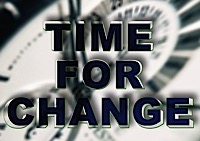
After rising in 2011, U.S. venture capital investment fell 15% last year.
Taken at face value, that’s bad news for startups. But what does it really mean?
VentureSource The $29.7 billion invested in 2012 was slightly ahead of 2010, according to Dow Jones VentureSource. And the $35.1 billion invested in 2011 was the most since 2001, as the tech boom took its final gasps. Since then, venture investment has stayed in a range of about $20 billion to $35 billion a year.
The latest investment drop came in a year that saw venture fundraising by investment firms flatten with $20.3 billion raised, only slightly more than in 2011, according to Dow Jones LP Source. (Both VentureSource and LP Source are databases owned by VentureWire publisher Dow Jones & Co.)
















 he British Private Equity and Venture Capital Association (BVCA) just published a report dispelling many of the stereotypes and myths about the performance of Europe’s VCs. The conventional wisdom has been that Europe’s risk-adverse nature and difficult IPO environment has constrained the potential and success of Europe’s venture and startup communities. As the report points out, we often here the “Where is the European Facebook” argument all the time from across the pond without data to back it up, namely concrete data on how Europe’s VC sector has actually performed vs the US over time. Fortunately, the BVCA in conjunction with the London School of Economics have conducted a in-depth study of the situation, which examined 35,798 companies (34% in Europe and 66% in the States) receiving VC funding between 1980 (1995 in Europe) and 2011. The main findings of the study challenge three of the biggest myths head-on:
he British Private Equity and Venture Capital Association (BVCA) just published a report dispelling many of the stereotypes and myths about the performance of Europe’s VCs. The conventional wisdom has been that Europe’s risk-adverse nature and difficult IPO environment has constrained the potential and success of Europe’s venture and startup communities. As the report points out, we often here the “Where is the European Facebook” argument all the time from across the pond without data to back it up, namely concrete data on how Europe’s VC sector has actually performed vs the US over time. Fortunately, the BVCA in conjunction with the London School of Economics have conducted a in-depth study of the situation, which examined 35,798 companies (34% in Europe and 66% in the States) receiving VC funding between 1980 (1995 in Europe) and 2011. The main findings of the study challenge three of the biggest myths head-on:


